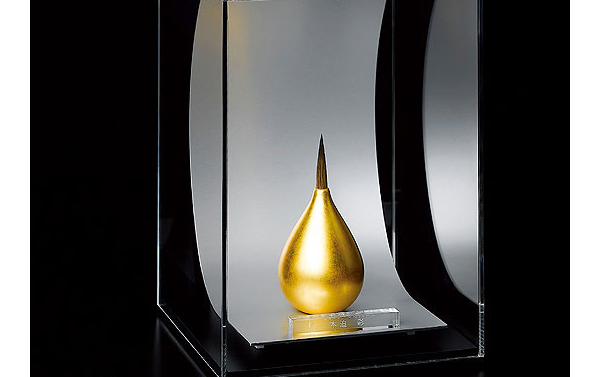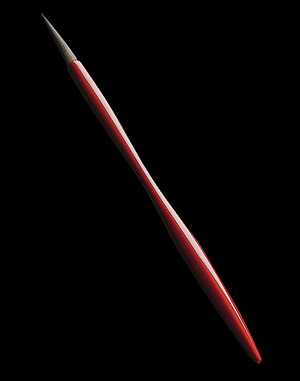Ever heard the tradition of turning trimmings from a baby’s first haircut into a keepsake brush?
No? Us neither… Until now that is. It seems that in many parts of the world baby’s first locks are preserved in different ways – some are incorporated into a photo album or baby book, some are placed in a special box and some, as in Japan apparently, are turned into a brush.
More accurately, the tradition, named aka-chan fude, turns a baby’s first strands into a writing, or calligraphy brush.
This idea stems from hundreds of years ago and the token is part of a wish for the child to grow up intelligent and literate: calligraphy = intelligence? Well, we kind of get the concept.
Keeping tradition alive is one company that offers to take your child’s hair – be patient, you need at least 6cm – and gives it to fude (calligraphy brush) craftsmen from Kumano, the “city of brushes” in Hiroshima prefecture.
They then create commemorative baby brushes, called hokoro, which come in many shapes and sizes but which are all made in the most traditional way possible – and they actually look pretty good…
If a simple calligraphy brush proves to be too lackluster for your taste, you can choose to turn baby’s first locks into a stylish, egg-shaped commemorative brush (pictured at the top) made of Echizen lacquered wood.
The token even comes in a case, with the baby’s name engraved on a nameplate. Those pieces not only make for a great conversation starter, but could, apparently, play an important role into preserving childhood memories.
(And you could use it to draw a line above your child’s head on the kitchen wall every time he or she spurts up a few inches?)
Pictured at the top of the page is a ‘TamagoElegant’ brush which takes its symbolic form from the baby’s shape at birth (tamago is egg in Japanese), and is made by collaboration with those Kumano brush makers.
The wood is lacquered many times over and then, once the lacquer is finished, a glue is placed on top of the lacquer and the gold leaf is applied. Finally, a Maki-e craftsman uses a lacquer process called “suri” to apply the finishing touches and its brilliance increases over time.
Well, now we know. Go check it out for yourself if you want more information – the more we think about it the more we can get behind the idea…
For more information on the craftspeople of Japan and to buy some of the products talked about here, visit JCRAFTS.com, an online shop that sells items with engrained Japanese spirit to 120 countries worldwide while aiming to also teach you all about where they come from.










